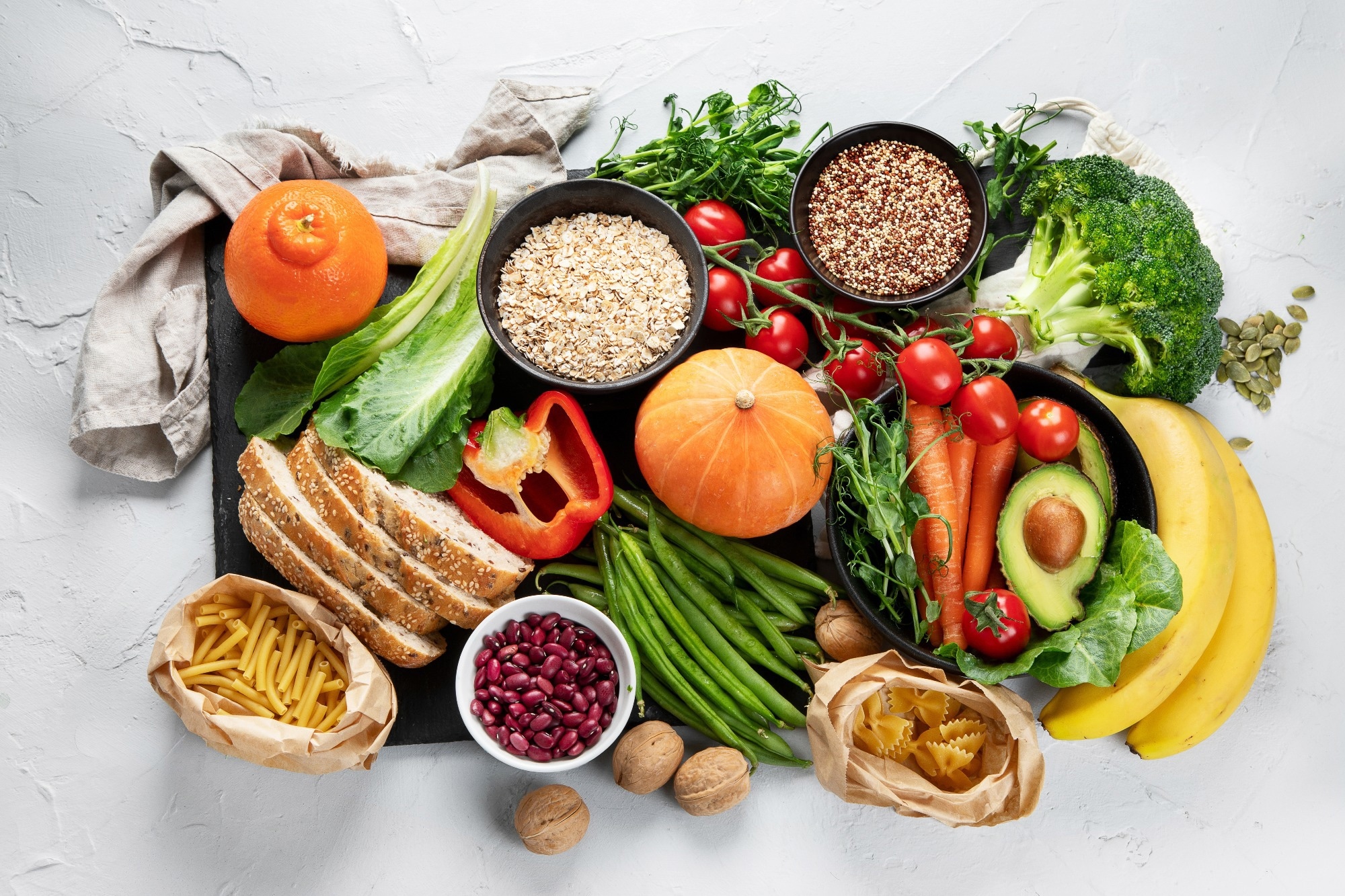A new study uncovers how gut bacteria may switch from digesting plant fibers to consuming protective mucus when fiber is scarce, fueling inflammation even in people without gut disease.
 Study: Gut microbiome genes involved in plant and mucin breakdown correlate with diet and gastrointestinal inflammation in healthy US adults. Image credit: Tatjana Baibakova/Shutterstock.com
Study: Gut microbiome genes involved in plant and mucin breakdown correlate with diet and gastrointestinal inflammation in healthy US adults. Image credit: Tatjana Baibakova/Shutterstock.com
In a recent study published in The Journal of Nutrition, researchers investigated the impact of fiber scarcity on the gut's "carbohydrate-active enzymes" (CAZymes) and their subsequent role in gastrointestinal inflammation amongst healthy United States (US) adults. The study leveraged data from 330 participants and found that a higher ratio of mucin-degrading to plant-degrading enzymes, a novel metric they termed Muc2Plant, was strongly associated with increased gastrointestinal inflammation.
Study findings highlight that the Muc2Plant ratio was positively correlated with fecal inflammation biomarkers (e.g., calprotectin [p=0.001] and neopterin [p<0.001]), suggesting that imbalances in microbial digestive function (due to low fiber utilization and greater reliance on mucin degradation) can promote a pro-inflammatory state even in healthy individuals, thereby providing insight into potential targets for intervention.
Background
While organisms like humans were historically believed to be able to digest much of the food they consume, more recent research has demonstrated that a large portion of the food we consume (e.g., complex carbohydrates) is broken down by the vast enzymatic machinery of the symbiotic gut microbiome.
Gut microbiotas are known to produce thousands of carbohydrate-active enzymes (CAZymes) that process insoluble plant fibers, releasing beneficial short-chain fatty acids (SCFAs) with validated inflammation-mitigating effects. Unfortunately, recent studies have observed that in the absence of sufficient dietary fiber, some gut microbes can switch to alternative food sources, primarily the mucus layer (made of glycoproteins called mucins) that lines and protects the intestines.
This degradation of the protective mucin barrier is a hallmark of dysbiosis and has been previously linked to inflammatory bowel disease (IBD). Although the harmful effects of low fiber on gut health are well documented, few studies have directly examined how fiber influences both the gut microbiome’s enzymatic activity (whether microbes choose plant material or mucin as fuel) and gastrointestinal inflammation simultaneously.
About the study
The present study aims to systematically investigate the relationship between dietary fiber intake, the gut microbiome's enzymatic capacity, and subclinical gut inflammation biomarkers in a cohort of healthy American adults. The cross-sectional study leveraged data from the United States Department of Agriculture (USDA) Nutritional Phenotyping Study (participant n = 330 individuals).
Data of interest included participants' socioeconomic demographic information (for statistical model standardization), detailed dietary information (using 24-hour recalls [ASA24] and food frequency questionnaires [FFQ]), and fecal samples (for microbiome characterization, enzymatic estimation, and inflammation biomarker assessment).
Key study analyses included shotgun metagenomic sequencing to identify all the microbial genes present in the gut, allowing for a detailed profiling of individual-specific CAZyme repertoires. It also included fecal biomarkers to measure markers of gastrointestinal inflammation, including fecal calprotectin, neopterin, and myeloperoxidase (MPO).
Study findings were used to develop a novel metric ("Muc2Plant"), representing the ratio between the abundance of mucin-degrading CAZyme genes and plant-degrading CAZyme genes. Analyses revealed that a higher Muc2Plant ratio indicates a microbiome better equipped to digest the host's mucus lining relative to dietary fiber, suggesting reduced fiber utilization and heightened inflammation risk.
Study findings
The present study demonstrates a measurable correlation between dietary fiber intake and CAZyme gene recruitment. Habitual intake of total and soluble fiber was positively correlated with a greater abundance and diversity of plant-degrading CAZymes (adjusted R² = 0.015, p = 0.010 for abundance). A lower fecal pH, indicating robust fiber fermentation, was similarly associated with a higher capacity for fiber digestion (adjusted R² = 0.036, p < 0.001).
The study also validated the utility of the novel Muc2Plant ratio. Higher ratios, indicative of enhanced mucin degradation, significantly and positively correlated with markers of gut inflammation, even in this phenotypically healthy cohort.
Specifically, a higher Muc2Plant ratio was observed to be associated with higher levels of fecal calprotectin (adjusted R² = 0.038, p = 0.001), a well-established marker of neutrophil infiltration in the gut, and higher levels of fecal neopterin (adjusted R² = 0.071, p < 0.001), a marker of macrophage-driven inflammation.
At the same time, plant-degrading CAZyme diversity and abundance were negatively associated with fecal myeloperoxidase but positively associated with fecal neopterin, highlighting that different immune pathways may be involved.
Surprisingly, the study found no link between dietary fiber intake and the Muc2Plant ratio. However, machine learning models identified that a higher intake of white potatoes significantly predicted a lower Muc2Plant ratio, suggesting that certain types of dietary starch may help foster a healthier microbial balance.
Conclusions
The present study did not find a direct relationship between dietary fiber intake and inflammation, but did highlight complex associations between dietary fiber intake, microbial enzymatic capacity, and inflammation biomarkers. It provides evidence that the functional capacity of the gut microbiome, specifically its balance of plant-digesting versus mucin-digesting enzymes, is a crucial factor in maintaining gut health.
The study also introduces and validates the novel Muc2Plant ratio metric, demonstrating the tool's robust association with subclinical gastrointestinal inflammation, even without overt disease. It emphasizes that these findings are correlative and not causal.
Download your PDF copy now!
Journal reference:
- Blecksmith, S. E., Oliver, A., Alkan, Z., & Lemay, D. G. (2025). Gut microbiome genes involved in plant and mucin breakdown correlate with diet and gastrointestinal inflammation in healthy US adults. The Journal of Nutrition. DOI – 10.1016/j.tjnut.2025.08.027. https://doi.org/10.1016/j.tjnut.2025.08.027 https://www.sciencedirect.com/science/article/pii/S0022316625005334